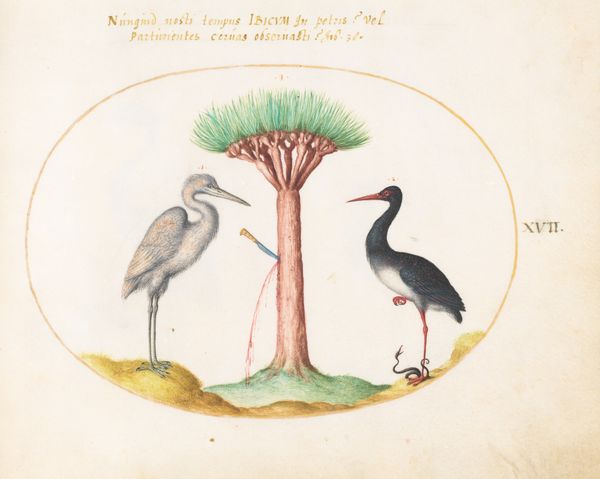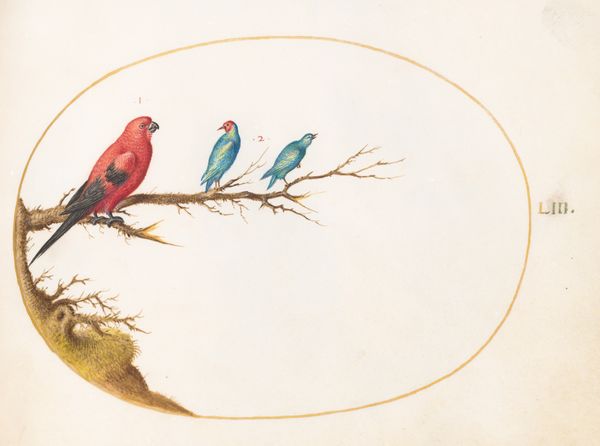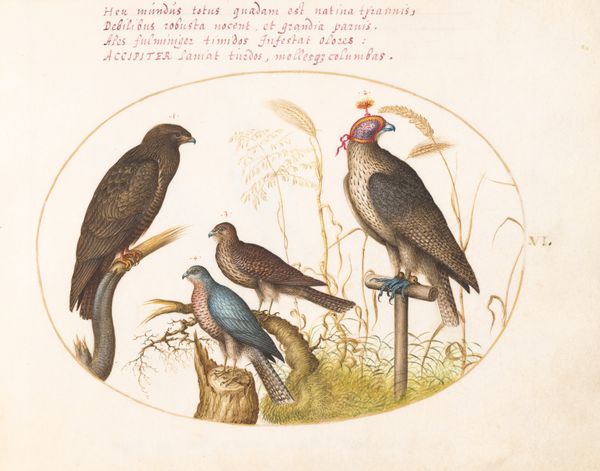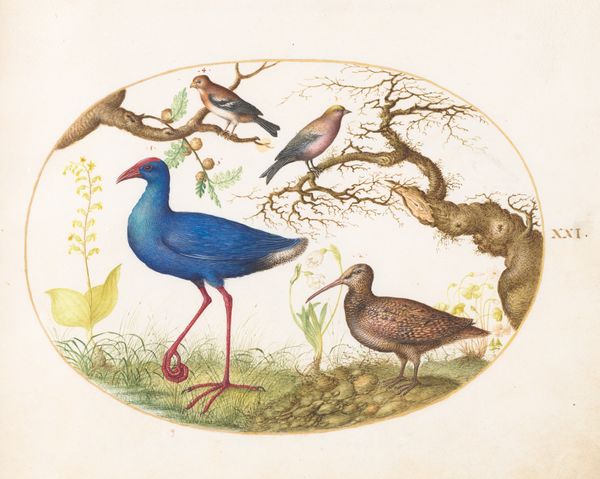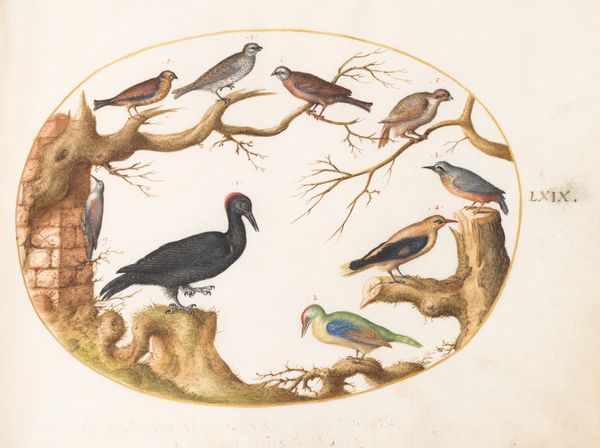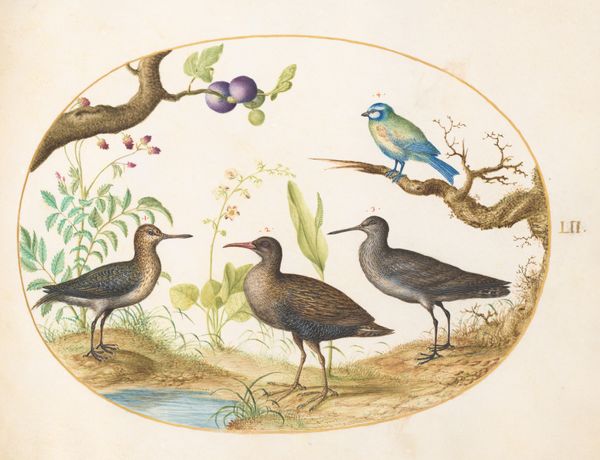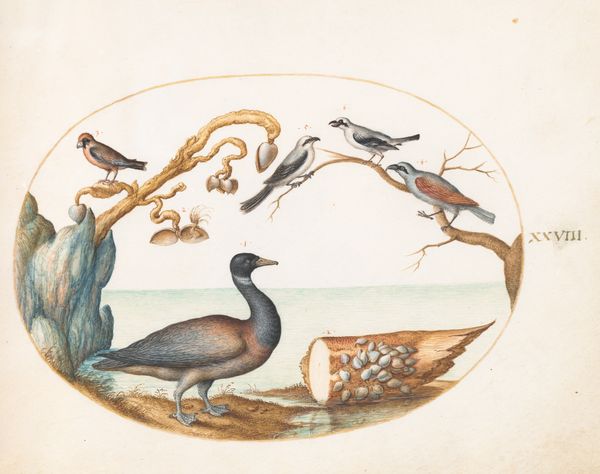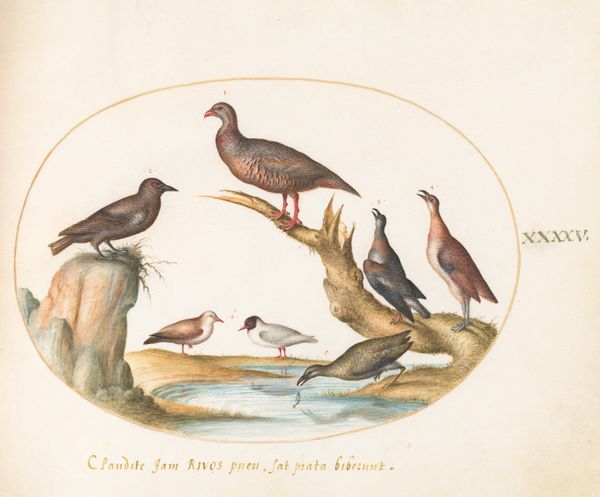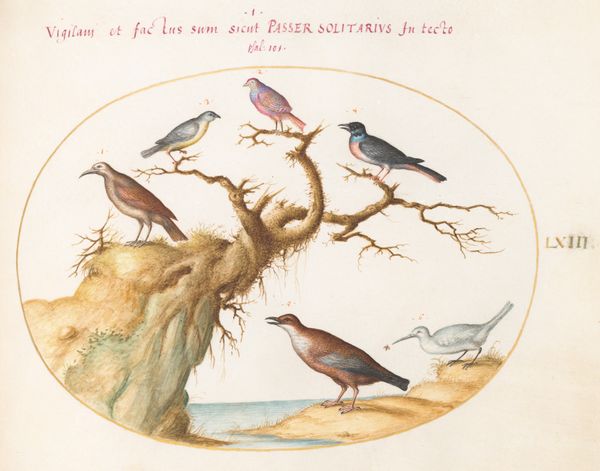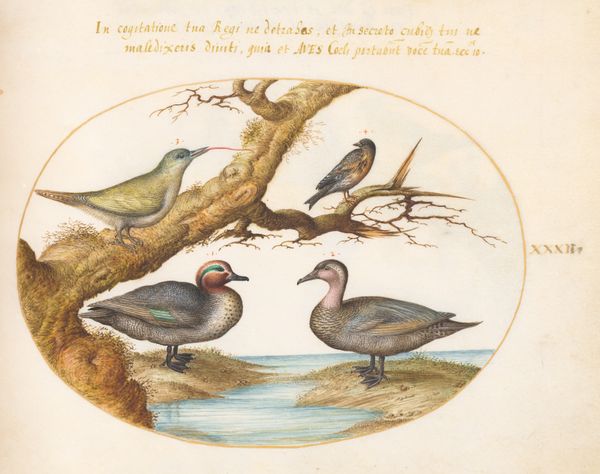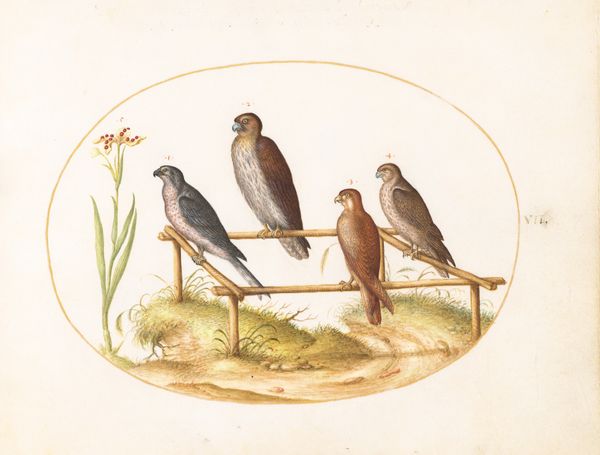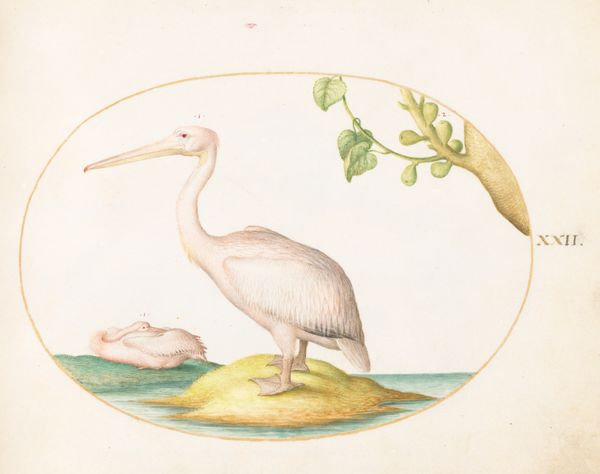
Plate 40: European Bee-Eater and Exotic Chicken c. 1575 - 1580
0:00
0:00
drawing, watercolor
#
drawing
#
11_renaissance
#
watercolor
#
coloured pencil
#
northern-renaissance
#
watercolor
Dimensions: page size (approximate): 14.3 x 18.4 cm (5 5/8 x 7 1/4 in.)
Copyright: National Gallery of Art: CC0 1.0
Curator: Editor: So, here we have "Plate 40: European Bee-Eater and Exotic Chicken" by Joris Hoefnagel, dating from around 1575 to 1580. It's done in watercolor, mostly. The two birds look so different; the composition feels unusual. What strikes you most about this piece? Curator: Looking at Hoefnagel's materials and process reveals a lot. These watercolors were meticulously produced. Consider the availability of pigments at the time; what does it tell us about trade networks and artistic labor during the Renaissance? Editor: It must have taken incredible patience to apply the colors in such a detailed way, especially in a period when accessing exotic fauna required considerable resources, and was limited to aristocratic circles. The rendering also feels hyperreal, yet abstracted as we cannot imagine both birds within the same natural environment, hinting perhaps at scientific inquiry mixed with displays of power through depicting specimens acquired from distant lands? Curator: Precisely! Think about the patronage system, how artists depended on wealthy clients who sought to flaunt their possessions and knowledge. This detailed rendering wasn't just for science; it served as a status symbol, representing dominion over nature and global resources. Editor: So, beyond their beauty, these artworks reflect power dynamics and global connections during that time? How do the exotic chicken's vibrant colors play into that, for instance? Curator: The chicken's vibrant coloration serves not merely as aesthetic flair but as evidence of possession. Someone had the means to acquire and maintain these rare animals. So the image speaks about ownership and social hierarchies encoded into the visual culture. Editor: It's like the artwork becomes an inventory, showcasing power through possession and meticulous documentation, reminding us of the social and economic systems at play during the Renaissance. Curator: Exactly. By focusing on the materiality and the social context, the image shifts from a beautiful illustration into a symbol of broader economic and social relationships of production of the era. Editor: I will never look at pretty pictures the same way, now understanding how the artistic choices illuminate labor, trade and power dynamics! Curator: I'm glad to have brought a new way of contextualizing it for you!
Comments
No comments
Be the first to comment and join the conversation on the ultimate creative platform.
